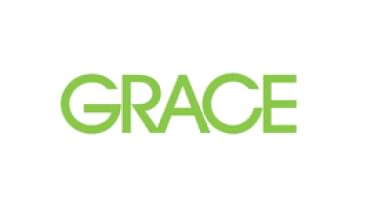
Sean Fitzgerald, PG, is a research geologist specializing in asbestos environmental studies.
W.R. Grace & Co. established a trust fund to compensate people after facing lawsuits over its asbestos-containing products and contaminated Libby mine. Asbestos litigation forced the company to file for bankruptcy in 2001. Two trusts were formed in 2014 to settle asbestos claims.

W.R. Grace has a long history of using asbestos in its products, including cement, plaster, fireproofing spray and surface materials. W.R. Grace also mined vermiculite in Libby, Montana. The mines were contaminated with asbestos, which is the main cause of mesothelioma.
The company bought the Zonolite Company in 1963 and ran a processing plant in Easthampton, Massachusetts from 1963 to 1992. After that, the site was rented to JPS Acquisition Elastomerics until 2000. W.R. Grace had to clean up the soil at the site since the vermiculite work had polluted it. In April 2001, the company filed for bankruptcy protection.
W.R. Grace’s Top Asbestos-Containing Products
In 2005, W.R. Grace and its top leaders were charged with hiding the health risks of asbestos in Libby and slowing cleanup efforts. Records showed they knew about the dangers since the 1970s. In 2009, a jury found them not guilty. Many in Libby were disappointed, blaming limits on evidence and the timing of the mine’s closure.
“A human and environmental tragedy has occurred in Libby,” said William W. Mercer, U.S. Attorney for the District of Montana, Department of Justice, in a 2005 statement. “This prosecution seeks to hold Grace and its executives responsible for the misconduct alleged,” Mercer stated.
Many workers who handled raw materials for W.R. Grace or used its products were exposed to asbestos on the job. This puts them at a higher risk of developing mesothelioma or other asbestos-related diseases. W.R. Grace workers were in mines, mills and factories, while some also moved vermiculite and other asbestos products for the company.
People who worked in home improvement and used W.R. Grace products were also at a higher risk of asbestos exposure. Those who installed insulation or used Zonolite insulation in their homes could be exposed.
Occupations at Risk of Asbestos Exposure From W.R. Grace’s Products
Some family members of W.R. Grace workers were exposed to asbestos accidentally brought home on clothes, skin and hair. This is called secondary asbestos exposure. People who lived, worked or went to school near the Libby mine or W.R. Grace’s factories were also exposed to asbestos from pollution in the air.
More than 2,000 miles from Libby, people in New York City were exposed to W.R. Grace’s asbestos products in the north tower of the World Trade Center. First responders and survivors of the 9/11 attacks faced health threats from Zonolite Mono-Kote, a spray-on fireproofing that contained asbestos.

You shouldn’t have to choose between getting care and paying for it. Get the financial support you deserve.
See My OptionsMesothelioma lawsuits against W.R. Grace sought compensation for medical expenses and lost wages. As legal actions mounted, the company eventually declared bankruptcy to end litigation against it. Through the bankruptcy process, the company established asbestos trust funds, which began accepting claims in 2014.
While the bankruptcy and asbestos trust fund process ends lawsuits against a company, one key piece of litigation filed when W.R. Grace was in bankruptcy was permitted to proceed. Montana officials sued W.R. Grace over environmental damage in Libby. Montana and the company eventually agreed to an $18.5 million settlement in 2023. The company will pay the amount plus interest over 10 years.
W.R. Grace had been ordered to pay $250 million in 2008 to cover future cleanup costs for the town of Libby. This was 6 years after it was placed on the EPA’s Superfund list.
Some people have also sued other companies related to W.R. Grace over their part in asbestos contamination. Ralph Hutt named W.R. Grace’s insurance company as the defendant in his suit. A Montana jury awarded Hutt $36.5 million in 2022. They agreed the company’s workers’ comp provider failed to ensure safety.
The company filed for bankruptcy in April 2001 to deal with more than 129,000 claims from people with mesothelioma, lung cancer and other asbestos-related diseases. In 2008, W.R. Grace shared a plan to settle with those involved. That plan included the creation of an asbestos trust fund. After some changes, the plan was approved, and W.R. Grace officially emerged from bankruptcy on February 3, 2014.
As part of the plan, the WRG Asbestos PI Trust was created. It pays people who got sick from mesothelioma and other asbestos-related diseases. The trust was initially funded with $3 billion available to claimants.
Key WRG Asbestos PI Trust Updates
Security and Exchange Commission filings show that as of June 30, 2021, W.R. Grace had $109.4 million in legacy environmental response costs. The current payment percentage applicable to claims against the WRG Asbestos PI Trust is 30.1%.
A second trust fund was also created in 2014. This second trust fund is the Zonolite Attic Insulation Trust, which funds property damage claims.
If you or a loved one was diagnosed with mesothelioma or another asbestos-related disease from W.R. Grace’s products, an experienced mesothelioma lawyer can help. Skilled mesothelioma attorneys can guide you through the process of filing an asbestos trust fund claim.
Your attorney will make sure your trust fund claim is filed correctly and within the trust’s required time frame. The sooner you file, the quicker you’ll receive money to help pay for medical bills and lost income.Patient Advocates at The Mesothelioma Center can connect you with a lawyer you can feel comfortable working with for your trust fund claim. Our Patient Advocates are also available to match you with the right mesothelioma specialists for your specific needs, support groups and resources for you and your family.
Recommended ReadingStay up-to-date on treatment, research, clinical trials, doctors and survivors
The information on this website is proprietary and protected. It is not a substitute for professional medical advice, diagnosis or treatment. Any unauthorized or illegal use, copying or dissemination will be prosecuted. Please read our privacy policy and terms of service for more information about our website.
This website and its content may be deemed attorney advertising. Prior results do not predict a similar outcome.
The Mesothelioma Center’s claim as the most trusted resource is based on our more than 150 5-star Google and BBB reviews. Our organization also helps more than half of all mesothelioma patients annually diagnosed.
Your web browser is no longer supported by Microsoft. Update your browser for more security, speed and compatibility.
If you are looking for mesothelioma support, please contact our Patient Advocates at (855) 404-4592
The Mesothelioma Center at Asbestos.com has provided patients and their loved ones the most updated and reliable information on mesothelioma and asbestos exposure since 2006.
Our team of Patient Advocates includes a medical doctor, a registered nurse, health services administrators, veterans, VA-accredited Claims Agents, an oncology patient navigator and hospice care expert. Their combined expertise means we help any mesothelioma patient or loved one through every step of their cancer journey.
More than 30 contributors, including mesothelioma doctors, survivors, health care professionals and other experts, have peer-reviewed our website and written unique research-driven articles to ensure you get the highest-quality medical and health information.
My family has only the highest compliment for the assistance and support that we received from The Mesothelioma Center. This is a staff of compassionate and knowledgeable individuals who respect what your family is experiencing and who go the extra mile to make an unfortunate diagnosis less stressful. Information and assistance were provided by The Mesothelioma Center at no cost to our family.LashawnMesothelioma patient’s daughter


Marchese, S. (2025, December 9). W.R. Grace & Co.. Asbestos.com. Retrieved December 27, 2025, from https://www.asbestos.com/companies/wr-grace/
Marchese, Sean. "W.R. Grace & Co.." Asbestos.com, 9 Dec 2025, https://www.asbestos.com/companies/wr-grace/.
Marchese, Sean. "W.R. Grace & Co.." Asbestos.com. Last modified December 9, 2025. https://www.asbestos.com/companies/wr-grace/.
An occupational scientist or another expert who specializes in occupational hazards reviewed the content on this page to ensure it meets current scientific standards and accuracy.

Sean Fitzgerald, PG, is a research geologist specializing in asbestos environmental studies.
Our fact-checking process begins with a thorough review of all sources to ensure they are high quality. Then we cross-check the facts with original medical or scientific reports published by those sources, or we validate the facts with reputable news organizations, medical and scientific experts and other health experts. Each page includes all sources for full transparency.
Please read our editorial guidelines to learn more about our content creation and review process.
